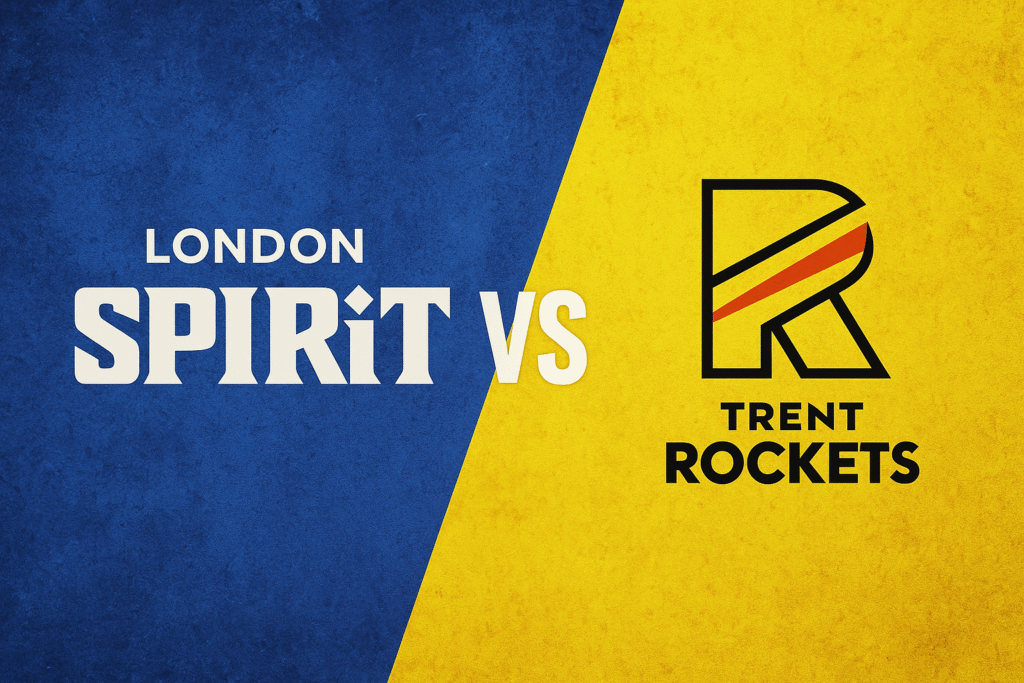London Spirit vs Trent Rockets, 13th Match – Live Cricket Analysis

Match 13 of the tournament marked yet another fascinating installment of the London Spirit versus Trent Rockets saga. This live encounter featured dramatic shifts in momentum, exceptional performances from individuals, online cricket id strategy alterations, and contest-centric dramatic turns. In this article, we analyze the London Spirit versus Trent Rockets match and highlight the stars from the contest while discussing the form of the teams in question, supported by relevant statistics.
Note: This article highlights key events and the impact of the players from London Spirit vs Trent Rockets while considering the framework of patterns and developments in living cricket over the last few weeks. It aims to explain how the match was sealed in the favor of one team and how the other could have altered their strategy to escape defeat\*
Match Context and Pre-Reading
London Spirit vs Trent Rockets is always of paramount significance. Both units have explosive top orders and solid, versatile bowling attacks suited to strangling pressure overs. Leading into the match, London Spirit aimed to deliver a statement W on their home ground, while Trent Rockets aimed to continue their steady rise on the league table. As is the case in almost every contest in short-format cricket, the powerplay and death overs are gamebreakers, and London Spirit vs Trent Rockets was no exception.
Pitch: It was a genuine surface yielding even bounce, providing value for shots, disciplined seam, and clever spin received proper reward.
Toss: The captain winning the toss decided to field, hoping for early swing and a convenient chase during the later stages.
First Innings: Positive Starts and Mid-Over Compression.
Trent London Spirit vs Trent Rockets opening stand was brisk, and the Spirit bowlers struggled to contain the top order as they punished delivery width at square. A powerplay scoring rate of 35-45 was set, and the other Rockets bowlers responded quickly.
Hard lengths just outside off curtailing the drives.
A deep square leg and deep third creating a ring field restricted easy doubles and twos.
To try and slow the batting rate, a leg spinner brought on early to the new batter.
Spirit’s anchor maintained a healthy rate on the scoreboard with good rotation of strike as middle order batter attempted to clear long on and extra cover. A pivotal moment London Spirit vs Trent Rockets arrived in the ninth over: a feeble lofted drive to a fielder changes Spirit’s momentum and swing. They hovered around a run a ball with wickets in hand so, by 60 balls they were in a prime position to accelerate.
In the London Spirit versus Trent Rockets matches, the death overs give the final verdict. Within the death overs, the bowling team alternated between wide full toss, bouncers, and slower balls. One of the set batters was skillfully playing a late cut towards the point region but was expertly yorked and subsequently dismissed. A late surge of a 12-15 run final over increased the total to a defendable score, challenging enough for a team to try and chase but not impossible.
To summarize the first-innings insights:
Rotational strike maintenance during the 30-60 ball mark prevented undue stress on the closing pair.
Leg-spin to left hand match-up, and wide lines to big London Spirit vs Trent Rockets hitters boundary line reduction increased.
Conservative fielding over the course of the match resulted in 8-12 saves, critical in close London Spirit and Trent Rockets match finishes.
Chasing After Dark
A focused intent was adopted by the Trent Rockets to pursue. Spirit batting was forced into two consecutive boundaries. Spirit employed a response of back of the length to the wicket, on pitch delivery, perilous square field, short mid, and a pull invitation met the first wicket. A foggy knuckle ball unraveling was the first wicket bonus.
London Spirit and Trent Rockets matched each other stride for stride and entered a tactical phase around balls 25-50. The batting side employed the sweep shot to counter the spinner for easier pickings and preferred the shorter side of the ground.
A composed third-wicket partnership jogged the chase forward at a touch less than the required pace. Still, the key shift in the match came in the 70-80 ball window—direct hit run-out and a top edge to short fine leg turned a relatively smooth chase into a desperate sprint.
Nerve was the deciding factor from that point forward. Spirit’s captain was confident in the death specialist’s ability to finish with wide yorker and the occasional slower shoulder-high ball. Rockets’ finisher seemingly opted for a more aggressive approach and was attempting to clear long off, but the boundary riders were set perfectly. Within the last five balls, 10-12 runs were required. Hope began with a carved four over backward point, but a perfectly executed yorker paired with a quick two left the chasing side a whisker short.
Standout Performers
Top order anchor (Spirit): Set the tone for the innings by “anchoring” at 30-40 off at above a run a ball to build a strong base. In London Spirit vs. Trent Rockets, this role usually determines whether the finishers get the freedom to express themselves.
Middle-order power hitter (Spirit): A clean 20-ball strike sequence raised a par total to a defendable one.
Death-overs specialist (Spirit): A trademark mix of slow and paced yorkers under pressure and sharp precision to the boundary were hallmark attributes in the match London Spirit faced off against Trent Rockets.
All-rounder (Rockets): His late cameo as well as two tidy wickets in the middle overs ensured the chase lasted far longer than what was expected.
Leg-spinner (Rockets): Controlling the middle overs, he took a bit had pace off the ball while forcing spoon-fed errors.
Tactical Battles That Mattered
Spin vs set batter: The fielding team waited until the batter reached 20 to try the rough outside off and then brought in the leg-spinner. The strategy served to slow the run rate from above 9 to 7.
Boundary denial: Both sides maintained their outfield plans. In London Spirit vs Trent Rockets, you often see teams win the rope battle rather than the wicket battle.
Strike bowling at the death: Power hitters preferring to strike straight were slotted with wide yorkers, forcing them to hit square, straight into the waiting hands of boundary fielders.
What the Numbers Say
Powerplay runs: Healthy yet modest, showing that the bowlers were able to exert some control early on.
Middle-overs economy: The rhythm was set by the spinners, and the pressure of dots resulted in two soft dismissals.
Death overs: 30-40 runs in the last 20 balls cumulatively – sufficient to alter the outcome with a singular mistake.
These observations align with recent patterns on shorter formats: in the case of London Spirit vs. Trent Rockets, the former tend to win the later half of the middle overs, as well as the straight boundary defense in the final overs.
Takeaways for Both Teams
London Spirit: Trust the anchor-plus-finisher framework. To counter the wide-yorkers, introduce a late-innings lap or scoop option.
Trent Rockets: Either shift the earlier power surge to the beginning of the chase or reserve an extra over of pace for the 70-90 ball squeeze.
Final Verdict
London Spirit vs Trent Rockets was rich in detail and drama. The 13th match in the series was subtly defined by small moments: a well-executed direct-hit, a pinpoint yorker, and boundary-saves. The winning team’s tactical clarity, though the margins were often nominal, was striking. Should these teams meet again, anticipate another tactical showdown with tight fields and clever pace-off variations, driving the top-order to set the stage for a exhilarating finish.







